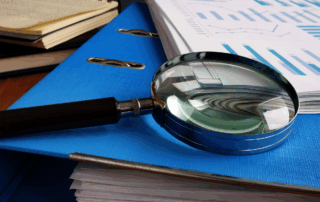As the shift to alternative sources of energy continues to be a topic of utmost relevance, investments in wind energy have become increasingly prevalent. While the energy source receives a great deal of attention, it also entails a complicated combination of risks, both financial and commercial. If you are considering wind farms as a potential investment, take the following factors into account to ensure that you have an ample risk management plan for this complex and largely unexplored territory.
Estimating
Needless to say, wind turbines are a sizable investment with the potential for huge losses. To sufficiently protect your investment, you must identify the unique sets of risks you will face during every phase of the investment: contracting, construction and ongoing operations. You must first determine the feasibility of the project, weighing construction and technology, payment, operation, maintenance, financial, political and sponsorship risks against financial projections and potential revenue stream. A practical plan of grid interconnection, dispatch, wheeling and sale of wind power requires a substantial amount of cooperation on both a small and large scale. Realistically estimating your risk when becoming involved in a wind project will allow you to mitigate it and successfully protect your investment.
Risks During Construction
Generally assumed by the builder, the unique risks faced for wind farms during their construction include the following:
- Cost overrun
- Delays
- Start-up and testing problems
- Contract and payment defaults
- Hidden defects
- Force majeure (catastrophic event)
These risks can be mitigated using contractual agreements and associated guarantees, contingency funds, and lines of credit and insurance coverage.
Risks During Operation
Upon beginning commercial operations, operators must analyze the myriad possible exposures they face. In general, the greatest drivers of exposure facing wind farms are property and equipment breakdown. Contractual arrangements, contingency reserves, cash traps, insurance coverage and other risk compensation devices are used to mitigate risk. Such risks include the following:
- Operating efficiency problems
- Routine operation and maintenance problems
- Major operation and maintenance problems
- Fall in market demand or pricing
- Input availability
- Force majeure (catastrophic event)
Considerable losses can be sustained when working with wind turbines – a total blade failure can lead to a claim ranging from $150,000 to $500,000, considering the cost of the crane, crew and materials. Depending on the size of the wind farm, a single event could have a large impact on your insurance deductible.
Other Wind Energy Considerations
Dramatic recent growth in this sector suggests that wind projects can be profitable endeavors, but the general lack of experience by sponsors, operators and insurers creates an especially precarious position for an investor. Fundamentally, wind energy is an intermittent resource, and its output must be carefully coordinated so as not to disrupt surrounding grid function. Finally, wind projects are not competitive with least-cost alternatives in most markets, meaning some price-support mechanism is usually required.
Support in Your Endeavor
To discuss your risk transfer options when planning and operating a wind farm, contact the insurance professionals at INSURICA, who will be able to assist you in assessing your unique risks and needs at every stage of the project and secure the appropriate coverage.
This is not intended to be exhaustive nor should any discussion or opinions be construed as legal advice. Readers should contact legal counsel or an insurance professional for appropriate advice. © 2022 Zywave, Inc. All rights reserved.
About the Author
Share This Story
Related Blogs
FERPA and Data Privacy Risks: What Schools Should Know
FERPA and data privacy risks have become increasingly important issues for schools to understand and address. FERPA—the Family Educational Rights and Privacy Act—is a federal law that protects the privacy of student education records. However, as schools collect and store more sensitive data, FERPA and data privacy risks are also evolving. To stay compliant and protect students, school administrators must understand the law, recognize common risks, and implement practical solutions.
Group Health Premiums on the Rise: What Employers Need to Know
In 2025, rising group health premiums are becoming a central concern for employers. Carriers like UnitedHealth, Anthem, and CVS Health have issued projections showing significant cost increases—driven by escalating claims severity, specialty drug costs, and continued labor shortages across provider networks.
SECURE 2.0 Implementation: A New Era in Retirement Planning
The SECURE 2.0 Act, passed in late 2022 and now in active rollout through 2025, is reshaping the landscape of workplace retirement planning. Designed to expand access, modernize plan design, and improve financial preparedness, the law introduces over 90 new provisions—many of which are now surfacing in HR departments across the country.








